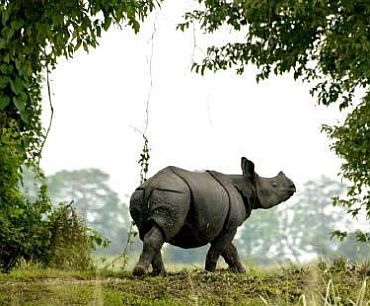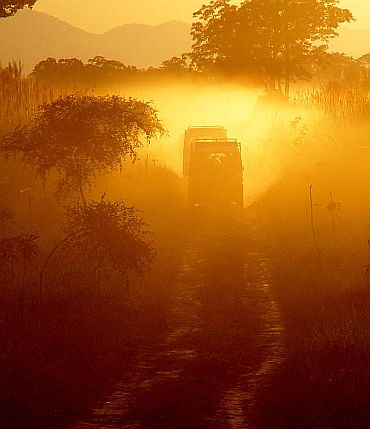Anurag Kashyap in Guwahati
They fearing that it would lead to severe restriction on tourists flow to the rhino land and hit the hospitality industry that has been growing leaps and bound in the area.
Altogether 22 local organisations, including bodies of tour operators and jeep safari associations, have launched a tirade against the Kaziranga Park authority and a few non-government conservation groups who have been advocating for restricting movements of tourists in 430 sq km core area of Kaziranga National Park in tune with the strict guidelines that comes with the management of a Tiger Project.
...
An uprising in Kaziranga sanctuary
As per the last official census carried out in 2002 the number of tigers in Kaziranga was 86 while it has over 2000 one-horned rhinoceros in a total area of 860 square kilometer.
The park, which boasts a treasure trove of other faunal and floral species, is the most visited destination in the entire northeast.
In response to the pressure from the Centre, the Kaziranga Park authority recently declared a 430 sq km of the park as core area where flow of tourists would be restricted much to the chagrin of the tour operators and hoteliers in the area who have decided to hit the streets against the bid to upgrade Kaziranga to a Project Tiger area.
An uprising in Kaziranga sanctuary
The Aaranyak feels that flow of visitors to the sprawling and resourceful national park should be equally distributed in its four ranges in order to promote tourism that is not detrimental to flora and fauna of the park.
Society has also stated that the tiger-monitoring project using camera traps in Kaziranga National Park was initiated by Aaranyak in collaboration with the authority in the park after it had been declared a Tiger Reserve in 2008.
An uprising in Kaziranga sanctuary
The objective of the project was to bring Kaziranga to the global focus in respect of successful conservation of tigers along with one-horned rhinos and other species.
Aaranyak believes that flourishing tourism activities have provided livelihood opportunities to fringe villagers in Kaziranga Park and sustainable tourism shall inculcate deep-rooted commitment in the minds of tourists and general public towards conservation of flora and fauna in Kaziranga.
Aaranyak, therefore, hopes that the management of Kaziranga National Park shall not consider total ban on tourism in the already prescribed tourism zones in the management plan of the Park to ensure that the local populace could earn their livelihood from sustainable tourism activities in the protected area.





article